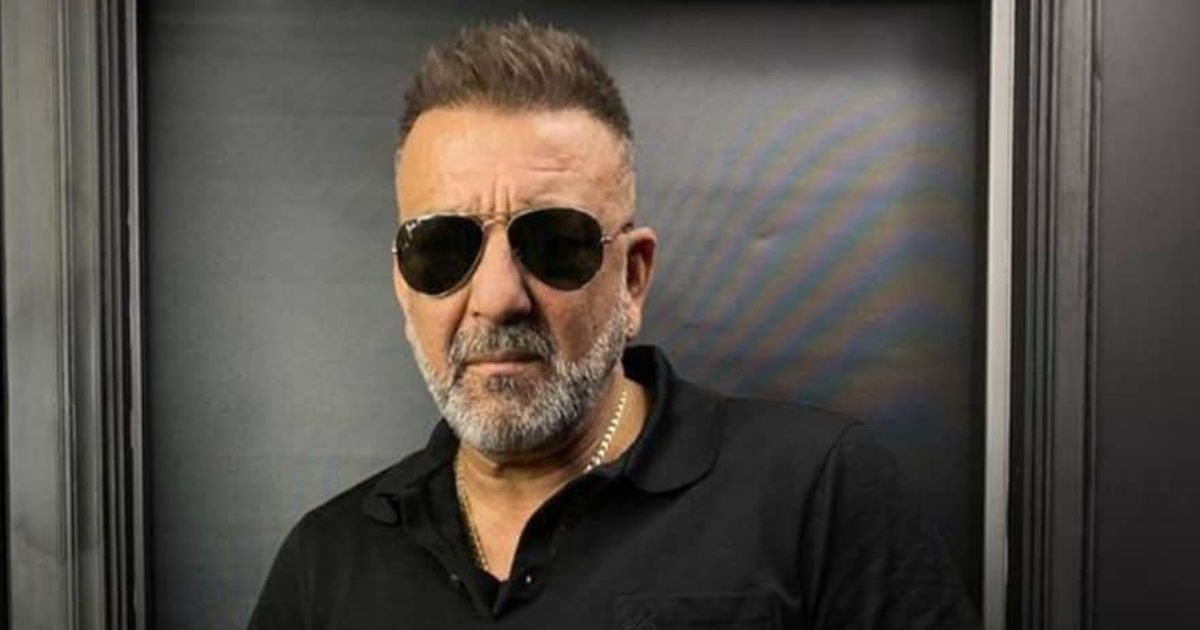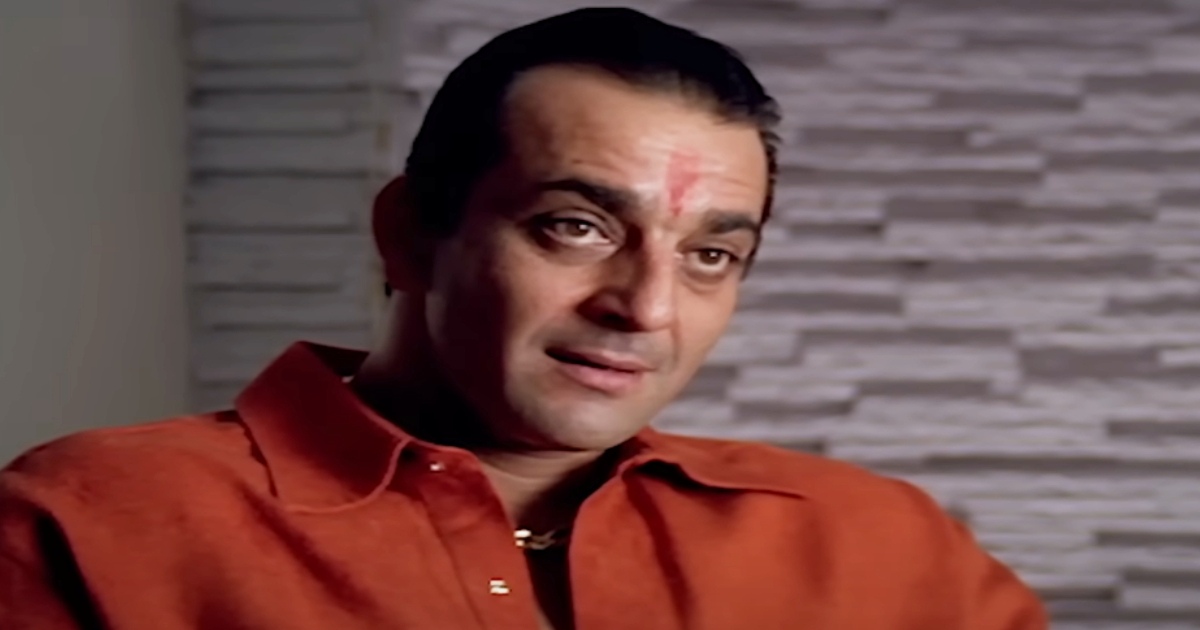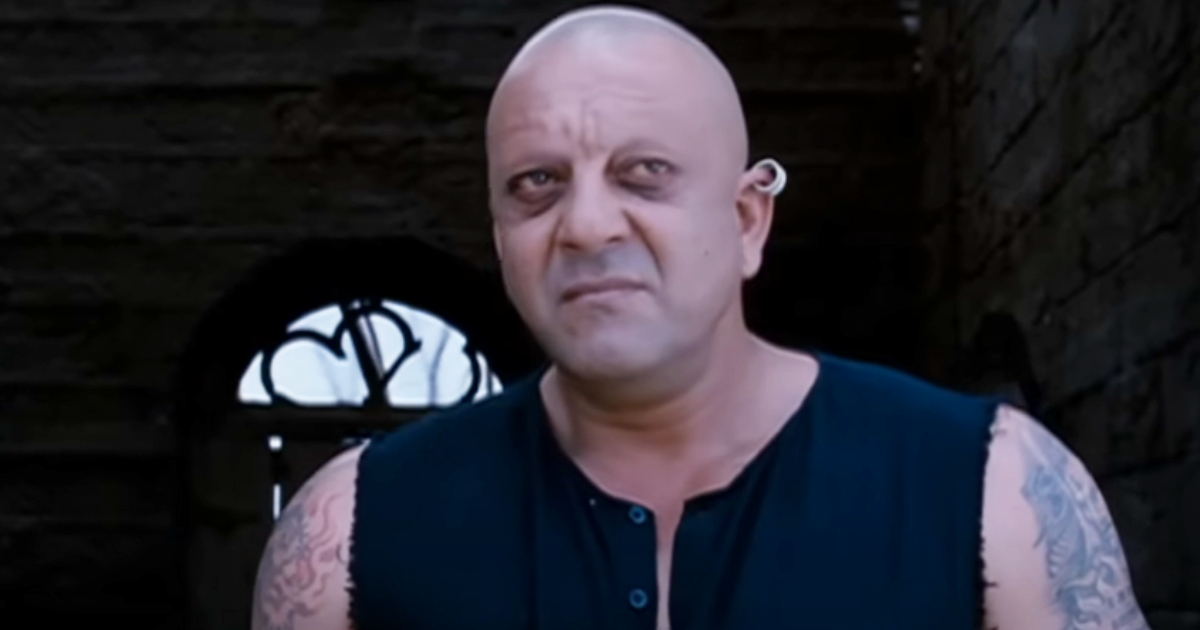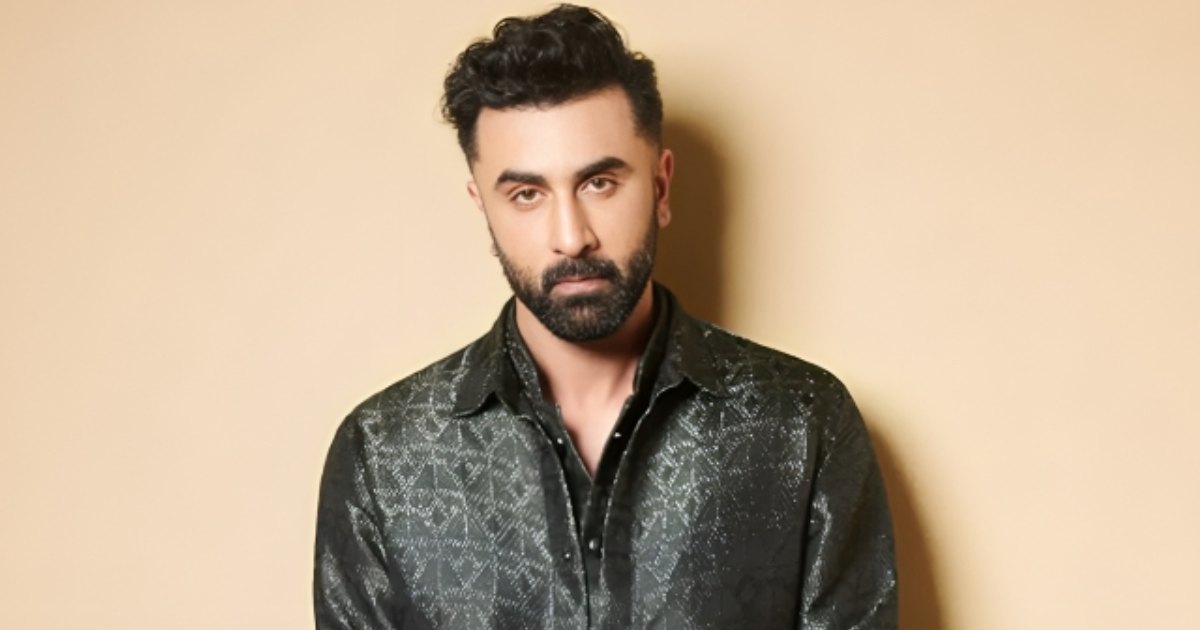
Few lives in the world of cinema have been as volatile and riveting as Sanjay Dutt’s – a saga marked by dramatic highs, devastating lows, and astonishing reinventions. From the very beginning, his journey has been a rollercoaster of crises and comebacks, testing not just his strength as an actor but his grit as a human being. Time and again, he has faced storms that would have broken most – addiction, scandal, imprisonment – yet each time, he has emerged with a new resolve, his resilience setting him apart.
Whether as the romantic hero of the ’90s, the brooding anti-hero of Vaastav, or the lovable Munna Bhai, Sanjay has shown an uncanny ability to move with the times and adapt – evolving not just as a performer, but as a man. His tall frame, chiseled features, and deep-set eyes gave him an effortless charisma that drew women in droves. Yet beneath the rugged exterior was someone who had loved fiercely, lost heavily, and endured far more than most. His life, both on screen and off it, has been a compelling blend of fire and fragility – making him not just a star, but a phenomenon shaped by fate, choice, and unrelenting will.
Sanjay Dutt’s chart presents the picture of a man whose life has been defined by extremes- of emotion, intensity, fame, downfall, redemption, and resilience. With Scorpio rising, his aura carries an unmistakable magnetism, the kind that draws attention whether he wants it or not. Scorpio ascendants often walk a tightrope between destruction and transformation, and few public figures embody that path of intense transformation as completely as he has. Beneath the surface of his stoic, brooding persona lies a deeply emotional soul, shaped by deep loyalties and scars from the past.
Trending

His Sun in Cancer reveals a softer core, a protective, family-oriented nature that is not often visible at first glance. Cancer Suns can be deeply emotional, even sentimental, and this, in Dutt’s case, is amplified by Mercury also being in Cancer. This combination gifts him with emotional intelligence, but also a tendency to be deeply affected by personal upheaval – something his early loss of his mother, actress Nargis, seemed to trigger. Mercury’s conjunction with Uranus adds unpredictability to his communication style and thinking. At times, he may speak from a place of sudden insight, shocking others with blunt, emotionally charged remarks. His thought processes may not follow conventional lines, but they carry a raw authenticity that his fans and peers often find endearing.
The Moon in Taurus lends some emotional grounding to the otherwise volatile currents of his life. It is a fortunate placement, giving a strong emotional foundation and a capacity for calm in the midst of chaos. It also points to a love for sensual pleasures – food, wine, music, and comfort. But more than that, the Taurus Moon offers a certain inner steadiness that likely helped him survive the darkest moments of his life, including his battles with addiction, imprisonment, and public scrutiny. While the Scorpio ascendant adds an intensity and a potential for self-destruction, the Taurus Moon steadies the ship when the storms rage too fiercely.
Mars and Venus, both in Leo, are showy, passionate placements, and explain his flair for drama, both on-screen and off. Mars in Leo gives him boldness, a larger-than-life presence, and a certain regal confidence. He is not one to back away from a fight -metaphorical or literal – and his willingness to face battles head-on is reinforced by the conjunction between Mars and Pluto. This aspect bestows immense reserves of willpower and intensity, but also a deep-rooted anger that can erupt if not managed. It also indicates a lifetime of confrontation with personal demons and the capacity to rise from the ashes each time. With Pluto involved, nothing in his life comes in moderation – transformation is the only constant. Mars conjunct Pluto in Leo gives him his raw screen presence and intensity, the sense that something dangerous yet compelling simmers beneath the surface.

Venus in Leo complements this fiery energy with dramatic passion and an attraction to grand gestures in love. He is not someone who does things halfway – whether in romance or rebellion. Venus in Leo also reflects his love for attention, admiration, and the spotlight. For someone who has lived under the glare of fame since birth, this placement makes sense. It also reveals a heart that is loyal and generous once truly committed, though it may take a while to settle. His romantic relationships have often played out on a large canvas – dramatic, public, intense – mirroring the theatrical nature of Leo Venus.
Jupiter in Libra brings a balancing influence. This placement often confers a sense of justice, fairness, and charm. It points to someone who thrives in partnerships and has a deep appreciation for beauty and harmony – perhaps explaining his occasional philosophical tone and his desire for redemption in the public eye. It softens some of the chart’s more turbulent placements, providing the ability to see both sides, to broker peace, and to seek reconciliation even after conflict. Jupiter in Libra may also play a role in his popularity – it gives a pleasing persona, one that others feel drawn to even after controversy.
Saturn in Sagittarius points to a philosophical streak beneath the bravado – someone who has struggled to find meaning in adversity, and who perhaps turned toward faith or introspection after enduring harsh Saturnine lessons. Saturn’s trine to Pluto strengthens his endurance and gives him the power to rebuild even when everything seems lost. It adds a karmic dimension to his trials, as if he were meant to go through the fire to find his higher self. This aspect also speaks to his eventual sense of responsibility and discipline -qualities he developed later in life, after paying a heavy price for earlier recklessness.
Rahu in Virgo and Ketu in Pisces add an additional layer of complexity. Rahu in Virgo often manifests as a compulsive need to fix or control one’s surroundings and can foster an obsessive focus on perfection, routine, or self-betterment.
The presence of Neptune in Libra and Pluto in Leo points to someone born into a generation marked by glamour and revolution – and in his case, someone who internalized those energies to live a life of personal transformation under the public eye. Neptune in Libra enhances his artistic sensibility and idealism, while Pluto in Leo, especially conjunct Mars, amplifies his presence and his tendency to live life at full volume.
Sanjay Dutt’s chart is not the chart of a smooth, undisturbed journey. It is a chart of someone who has faced life’s extremes, often simultaneously – privilege and persecution, love and betrayal, fame and infamy. But it is also the chart of someone born to survive, to transform, and to emerge stronger with each fall. His life has been a cinematic saga in itself, echoing the deep, karmic patterns etched into his birth chart. It is a chart of evolution, not ease – and in that, it mirrors the mythos of the man himself.
Sanjay Dutt’s journey in cinema began with the mahurat of Rocky on January 1, 1980, during his Mars dasha, Moon bhukti – a film that would release on May 6, 1981, and mark his official debut during his Rahu dasha, Rahu bhukti. Rocky was a box office success. The timing, however, was emotionally devastating: his mother, the iconic Nargis, passed away just days before the film’s release. Grief-stricken and emotionally vulnerable, Sanjay was already deep in the throes of a serious drug addiction. Despite the personal turmoil, he managed to secure roles in several films, including Subhash Ghai’s Vidhaata, where he shared screen space with veteran actor Dilip Kumar – a film that turned out to be a commercial success. Yet, his addiction continued to take a toll. Working was an uphill battle.

After repeated efforts to help him recover in Mumbai failed, he was sent to the United States for rehabilitation in January 1984, during his Rahu dasha, Jupiter bhukti. It was a dark and harrowing phase, but he emerged clean and sober in September 1984, during the same Jupiter bhukti, having confronted his demons head-on. Upon his return, however, the industry had all but turned its back on him – producers were reluctant to cast him. It was fight master Pappu Verma, trying his hand at direction, who offered him Jaan Ki Baazi, a film that found reasonable success. But the real breakthrough – the one that would help audiences and the industry take him seriously – still eluded him. It was at this juncture, during his Rahu dasha, Saturn bhukti, that Kumar Gaurav, his brother-in-law and a star in need of a comeback himself after the meteoric Love Story, decided to produce a two-hero film featuring both of them. The script had an author-backed role for Sanjay Dutt. Mahesh Bhatt, fresh off critical acclaim for Arth and Saaransh and hungry for box office success, was to direct. Salim Khan, recently split from his famed writing partnership with Javed Akhtar, also came on board – eager to silence critics who questioned his solo abilities. With every major player in that project driven by the desire to prove themselves, the team delivered Naam – a modestly budgeted film that struck gold at the box office.
It not only revived Dutt’s career but firmly established him as a saleable, bankable star. This was the first among many comebacks Sanjay Dutt has gone on to make over the years, redefining his image to maintain the connect with his audience. The year after Naam, Sanjay Dutt married Richa Sharma, and the year after that, he had a daughter, Trishala. It was a while before he could replicate the success of Naam. Mahesh Bhatt’s next collaboration with Sanjay Dutt – Kabzaa – although praised, did not work at the box office. In 1989, Kanoon Apna Apna and Hathyar were both average grossers. In the former, Sanjay Dutt again worked with Dilip Kumar, yet held his own. In the latter, Sanjay Dutt’s performance was lauded by critics. This was the Saturn bhukti. Saturn, as the great taskmaster, compels us to make much-needed changes and tests our resolve. When a native works hard and demonstrates resilience during the Saturn period, it bestows rewards that endure. Naam remains one of Sanjay Dutt’s finest performances.

Post-Naam, in the late eighties, Sanjay Dutt frequently starred in mid-budget films, typically vendetta-themed action thrillers – in keeping with audience tastes at the time. With Video Cassette Players (VCRs) becoming popular, family audiences were no longer frequenting cinemas as they once did. Soon after, tragedy struck when Richa Sharma was diagnosed with cancer in January 1989, during his Rahu dasha, Mercury bhukti. She underwent treatment for cancer in the US. However, the distance took a toll on their relationship, and they eventually separated.
In 1990, Sanjay Dutt entered his Saturn return – a pivotal astrological phase that occurs when Saturn returns to the exact position it occupied at the time of one’s birth. Often seen as a period of reckoning and growth, the Saturn return urges individuals to reflect deeply on their life choices and make transformative shifts. For Dutt, this appears to have been a time of serious introspection and creative re-evaluation. He began working intensively on his physique, trading in his earlier lanky frame for a more muscular build, and surprised many by honing his dancing skills – evolving from an actor once dismissed as having two left feet to someone who could hold his own on the dance floor. Saturn, the great taskmaster, demands discipline, effort, and endurance – but the rewards it grants are lasting and hard-earned.
That year, Thanedaar hit the screens – a masala entertainer that turned into a surprise hit, thanks in large part to Sanjay Dutt’s newfound physicality, his sizzling onscreen chemistry with Madhuri Dixit, and his confident moves in the film’s catchy musical numbers. But the real metamorphosis came in 1991 with Saajan, a musical romance. In a complete departure from his earlier action-heavy roles, Dutt portrayed a physically challenged, soft-spoken poet – a character that revealed an emotional depth and restraint previously unseen in his performances. Acting alongside Salman Khan and Madhuri Dixit, he delivered a quietly intense, heartfelt performance that struck a chord with audiences. He also sported long hair and a mullet – a hairstyle that, combined with his sculpted physique, became a nationwide trend. Saajan emerged as one of the biggest blockbusters of the year and brought him both critical acclaim and widespread admiration.

That momentum carried through with films like Khoon Ka Karz and Yodha, which also performed well. Then in December, Sadak released – another collaboration with Mahesh Bhatt – and proved to be a resounding commercial success. By the end of 1991, Sanjay Dutt had completed a remarkable reinvention and was now counted among the top stars in Bollywood – second only to Amitabh Bachchan, who was on a sabbatical from films at the time.
The following year, 1992, during his Rahu dasha, Venus bhukti, saw five releases from Dutt: Adharm, Sahebzaade, Sarphira, Jeena Marna Tere Sang, and Yalgaar. While most of them were moderate successes, Yalgaar was a critical and commercial disaster. Directed by Feroz Khan, the film drew criticism for its uneven storytelling and bizarre casting – with a middle-aged Khan writing himself the central role and casting a significantly younger Mukesh Khanna as his father.
The year 1993, during the same Venus bhukti, would mark the beginning of a nightmare that would haunt Sanjay Dutt for the next two decades. On April 19, 1993, at 2:15 am, he was arrested at the airport under the Terrorist and Disruptive Activities (Prevention) Act (TADA) and the Arms Act for his alleged involvement in the 1993 Mumbai serial blasts – a shocking development that stunned the nation and sent tremors through the film industry. A few weeks later, on May 5, he was granted bail. In the weeks that followed, Sanjay Duttis believed to have met Rhea Pillai, whom he would later go on to marry.
Ironically, this brief imprisonment ended up giving an unexpected boost to Subhash Ghai’s Khal Nayak, in which Dutt played a brooding anti-hero. Hoardings of his character in a prison uniform and handcuffs – eerily mirroring real-life events – only heightened public curiosity around the film. The soundtrack had already become a rage, and when the film finally released, it proved to be a massive box office hit and the second-highest grosser that year. For Sanjay Dutt, who was deeply anxious about how audiences would respond to him in the wake of his legal troubles, the success of Khalnayak came as a much-needed reprieve.

The respite was short-lived, however. On July 4, 1994, during the Rahu dasha, Venusbhukti, his bail was cancelled, and he was re-arrested, entering Thane Prison at 6:00 PM that evening. What followed were some of the darkest months of his life. For security reasons, he was placed in solitary confinement – a brutal and mentally excruciating ordeal that tested his spirit. Locked away and isolated, he battled loneliness and despair in a space devoid of human contact. It wasn’t until October 16, 1995, during his Rahu dasha, Moon bhukti, that the Supreme Court finally granted him bail, and he was released two days later – ending another grim chapter marked by anxiety, stigma, and an uncertain future.
The films that followed Sanjay Dutt’s release were mostly projects delayed due to his imprisonment, and for the most part, they failed to make a mark. Aatish was his only success. Sanjay was still perceived as a box office draw and was being offered 1 crore per film. However, by now, the three Khans – Shah Rukh, Salman, and Aamir – had surpassed him in box office appeal. In 1996, Sanjay Dutt got permission to travel to the US to see his wife, Richa Sharma, who was undergoing cancer treatment. However, by then, doctors had given up on her, and she was only being given palliative care. On December 10, 1996, during the Rahu dasha, Moon bhukti, Richa Sharma passed away.
The year 1996 was also significant because it marked the beginning of the redevelopment of Sanjay Dutt’s family home – their Pali Hill mansion – which was to be converted into a residential building. The project would take nearly a decade to complete, and the family eventually moved into the new property in May 2005. On February 14, 1998, during his Rahu dasha and Mars bhukti, Sanjay Dutt married Rhea Pillai. That year, he had only one notable release, Dushman, which was a moderate success.
The Rahu dasha ended, and his Jupiter dasha began in April 1998. The year 1999, during his Jupiter dasha, Jupiter bhukti, turned out to be an excellent one for Sanjay Dutt’s career. He delivered several box office successes with Kartoos, Khoobsurat, Daag: The Fire, and Haseena Maan Jayegi. By this time, Dutt had grown more confident in his craft and was beginning to explore new genres, including comedy. That same year came Vaastav, directed by Mahesh Manjrekar – a film that proved to be a turning point in his career, much like Naam had been over a decade earlier. Dutt’s portrayal of a reluctant gangster struck a chord with audiences, and the film’s dramatic climax – reminiscent of Mother India – earned him both commercial success and critical acclaim.

In 2000, during his Jupiter dasha, Saturn bhukti, Mission Kashmir performed well at the box office, buoyed in part by the presence of Hrithik Roshan, who had taken the industry by storm with his debut in Kaho Naa… Pyaar Hai earlier that year. Over the next couple of years, however, Dutt’s films delivered mixed results. The trade began questioning his box office pull, especially as opening-day crowds started thinning. But in 2002, Kaante, released during his Jupiter dasha, Mercury bhukti, changed the narrative. The film – a stylish, desi take on Quentin Tarantino’s Reservoir Dogs – paired Dutt with Amitabh Bachchan, who had recently begun embracing powerful character roles. Their dynamic worked, and the film was a commercial hit. Still, there was a growing sense that Dutt would need to redefine his image once again. The brooding gangster persona that had served him so well for years was beginning to lose its edge.
In 2002, Sanjay Dutt’s career was still on uncertain footing. Many in the industry had begun to write him off. He was in the midst of his Sade Sati – the challenging seven-and-a-half-year period when Saturn transits the sign preceding the natal Moon sign, the sign of the Moon itself, and the one that follows. It is a phase often marked by trials and setbacks, but if the individual rises to the occasion, the rewards can be deep and long-lasting. Sanjay Dutt’s first Sade Sati began when he was 10 years old, in 1969. That same year, he was sent – against his wishes – to boarding school in Sanawar, in an effort to discipline him. For a 10-year-old Sanjay, it was a difficult time. Saturn, known as a disciplinarian and teacher, is placed in his first house of personality and self. The next seven-and-a-half years of Sade Sati proved transformative, shaping his personality in important ways.
To return to 2002, Sanjay Dutt had initially been cast in a supporting role in a film in which Shah Rukh Khan was slated to play the titular character. But destiny had other plans. Shah Rukh had to withdraw from the project due to a recurring back injury, and Dutt was asked to step into the lead. Jimmy Shergill, in turn, was brought in to play the role originally intended for Dutt. The film was Munna Bhai M.B.B.S. Even after the film was completed, it struggled to find buyers. With Sanjay Dutt perceived to be on the decline and Rajkumar Hirani making his directorial debut with an unconventional film, confidence in the project was low. A distributor from South India, who had paid an advance of 5 lakhs out of 11 lakhs, backed out after watching the film.
As a result, producer Vidhu Vinod Chopra decided to release the film himself in December 2003, during Sanjay Dutt’s Jupiter dasha, Mercury bhukti. The film earned ₹1 crore in that region upon release. Munna Bhai M.B.B.S. turned out to be a sleeper hit. Its characters, dialogues, and feel-good spirit quickly seeped into popular culture. Sanjay Dutt’s portrayal of the lovable gangster with a heart of gold not only transformed his public image but also became one of the most memorable performances of his career. Three years later, in 2006, during his Venus bhukti, the sequel Lage Raho Munnabhai surpassed the original’s box office performance, redefining his brand for a new generation.

On May 25, 2005, during his Jupiter dasha, Ketu bhukti, Sanjay Dutt’s father, actor and parliamentarian Sunil Dutt, passed away, just days before he was to move into the building constructed on the site of their former Pali Hill mansion. On November 28, 2006, during his Venus bhukti, thirteen years after his court case had begun, the charges under the Terrorist and Disruptive Activities Act (TADA) were dropped. He was, however, convicted under the Arms Act. The TADA charges being dropped helped erase the stigma of allegedly being a terrorist, though the legal process continued as the judgment was appealed. On July 31, 2007, the TADA court sentenced Sanjay Dutt to six years of rigorous imprisonment. He was taken into custody the same day and moved to Yerawada Prison on August 2, 2007. He applied for bail and was granted temporary release on August 20. On October 20, 2007, he was taken into custody again and was released on bail on November 27, 2007. The bail was granted by the Supreme Court after Dutt appealed the judgment.
All of this took place during his Jupiter dasha, Venus bhukti. In the same Venus bhukti, in 2007, Shootout at Lokhandwala performed well at the box office, and Dhamaal was a reasonable success, while some of Sanjay Dutt’s other releases received a mixed response. Undeterred, he continued to redefine his image – this time by embracing negative roles. The following year, in 2008, Sanjay Dutt ended his decade-long marriage to Rhea Pillai. On February 7, 2008, he married Manyata in a civil ceremony in Goa, also during the Venus bhukti.
On January 8, 2009, during his Jupiter dasha, Sun bhukti, Sanjay Dutt surprised many by entering politics, joining the Samajwadi Party amid much fanfare. The party announced him as its candidate for the Lucknow constituency in the upcoming Lok Sabha elections – a seat once held by former Prime Minister Atal Bihari Vajpayee. However, on March 31, 2009, his political aspirations were abruptly halted when the Election Commission disqualified him from contesting, citing his conviction under the Arms Act in connection with the 1993 Bombay blasts case. Though visibly disappointed, Dutt withdrew from the race and was later appointed the party’s General Secretary on April 2, 2009. All of this unfolded during his Sun bhukti. But his brief stint in politics lacked the conviction and consistency needed to survive in that world.
On January 9, 2010, he resigned from the post and distanced himself from the Samajwadi Party. He publicly admitted that politics wasn’t for him and that he wished to return to films – the only world where he truly felt at home. On October 21, 2010, during his Jupiter dasha, Moon bhukti, Sanjay Dutt and Manyata welcomed twins.
Most actors have been reluctant to reprise roles originally played by Amitabh Bachchan, wary of the inevitable comparisons and the towering legacy he carries. Remakes of his classics have often faltered – Sholay and Zanjeer being notable examples that failed to connect with audiences. However, Agneepath (2012) proved to be a rare exception in the world of remakes. Released during Sanjay Dutt’s Jupiter dasha, Rahu bhukti, the film struck a deep chord with audiences, with Hrithik Roshan stepping into the role of Vijay Dinanath Chauhan. At the heart of its impact was Sanjay Dutt’s chilling portrayal of the bald and brutal antagonist, Kancha Cheena – a performance that not only earned widespread acclaim but also marked yet another reinvention in his long and eventful career.

Much like the arc of his life, just when things appeared to have settled into a steady rhythm, turbulence was once again looming. On March 21, 2013, during his Jupiter dasha, Rahu bhukti, the Supreme Court sentenced Sanjay Dutt to five years in prison, reducing the original six-year term, and directed him to surrender within four weeks. His legal team requested that he be permitted to surrender directly before the jail rather than the special court – a plea the apex court considered on April 17, ultimately granting him additional time. In the meantime, Dutt filed a review petition challenging the March 21 verdict, but on May 10, the Supreme Court dismissed it. Six days later, on May 16, 2013, Sanjay surrendered and was sent to Yerawada Central Jail in Pune. While he was serving his sentence, PK (2014), directed by Rajkumar Hirani, was released and became a major success.
His Saturn dasha began in April 2014. The transformation Saturn was to bring had now fully taken shape. Sanjay Dutt had gone from a wild teenager to an actor respected for his performances – someone who had made mistakes, served his time, and was now evolving into an entrepreneur. On October 23, 2015, during his Saturn dasha, Saturn bhukti, Sanjay Dutt made headlines with an unexpected move into the world of cricket by buying a franchise in the Masters Champions League (MCL), a Twenty20 tournament featuring retired international cricket stars. His team, the Leo Lions, brought together an impressive roster of former legends, including Brian Lara, Scott Styris, and Heath Streak.
Over the next couple of years, Dutt was periodically released on parole or furlough, but it wasn’t until February 25, 2016, that Sanjay Dutt finally walked out of prison a free man -bringing this turbulent chapter to a close, during his Saturn dasha, Saturn bhukti. He now set his sights on a comeback. His first post-release film was Bhoomi, a crime drama in which he played a father seeking revenge for the assault on his daughter. The film, however, failed to make a mark at the box office. Over the next few years, several of his films either flopped or performed below expectations.
In June 2018, during his Saturn dasha, Mercury bhukti, Sanju – his biopic directed by Rajkumar Hirani – hit the screens, with Ranbir Kapoor portraying Sanjay Dutt and delivering one of the finest performances of his career. The film significantly shaped public perception of Dutt, reinforcing his image among fans and introducing his complex journey to a wider audience. Sanju was both critically acclaimed and commercially successful, emerging as the highest-grossing film of the year.
In 2020 – the year the COVID-19 pandemic brought the world to a standstill – Sanjay Dutt was diagnosed with lung cancer. The news reportedly devastated him, especially as a father to two young children. However, in August 2020, during his Saturn dasha, Ketu bhukti, he made the decision to undergo treatment. Armed with positivity and determination, Dutt battled the disease, and by October, he was declared cancer-free. It wasn’t until KGF: Chapter 2, released in April 2022 during his Saturn dasha, Venus bhukti, that he tasted blockbuster success again. The film grossed over 1,200 crore worldwide and was among the highest-grossing releases of the year, firmly reestablishing Dutt as a formidable screen presence. He had once again managed to redefine his image and stage a successful comeback.

Following this, he appeared in Leo, released in October 2023, also during the Venus bhukti, which went on to become one of the highest-grossing Tamil films of all time, raking in over 607 crore. He was also seen in Jawan (2023), again in the Venus bhukti, which earned close to 1,163 crore globally. These hits established him among the most bankable veterans in the industry. Today, Sanjay Dutt is counted among the highest-paid actors of his generation, reportedly commanding a fee of over 10 crore per film.
During the Saturn dasha, Venus bhukti, Sanjay Dutt also expanded his footprint as an investor. On February 24, 2023, it was reported that he had invested in Dawn Town, a fast-growing premium sneakers marketplace catering to India’s rising sneakerhead culture. The platform, known for curating exclusive and limited-edition footwear from global brands, aligned with Dutt’s personal style and passion for edgy fashion. Later that year, on June 20, 2023, media reports announced that he had entered the alco-bev space by investing in Cartell & Bros, a rising homegrown spirits startup. Known for its premium rum brand Don Michael, the company aimed to disrupt both the Indian and international liquor markets with its craft sensibilities and bold branding. Both alcohol and fashion fall under the domain of Venus – a planet closely associated with luxury, aesthetics, and indulgence.
In December 2024, during his Saturn dasha, Sun bhukti, Sanjay Dutt and his wife, Maanayata Dutt, ventured into the culinary world with the launch of Dutt’s Franktea in Dubai, marking the actor’s first foray into the food and beverage industry. Since then, Sanjay Dutt has remained firmly in the public eye. He has become the go-to choice for powerful antagonist and senior statesman roles in pan-India films, with several major productions lined up across Hindi, Tamil, Telugu, and Kannada cinema. His towering screen presence and unmistakable charisma continue to make him a draw at the box office. Off-screen, he has adopted a more reflective and grounded persona – speaking openly about his past struggles, his cancer battle, and the importance of family. Endorsement deals, public appearances, and film announcements keep him consistently in the news, and his resilience has earned him the status of an icon – someone who has weathered storms and come out stronger.

Sanjay Dutt is currently in his Saturn dasha, Moon bhukti, and will remain in it for at least the next year. The year ahead promises to be a dynamic and eventful one, with serendipity playing a strong role in shaping key developments to his advantage. A new phase is set to begin in the second week of August 2025, bringing fresh creative collaborations that are likely to unfold over the course of the month. While the last week of August may bring a spike in expenses, it could also coincide with the acquisition of a significant asset – possibly in real estate, private equity, stocks, or even a stake in a business partnership. A new car purchase is also on the cards.
September will carry the momentum forward and appears poised to be a standout month for his career. His work is likely to attract widespread appreciation, and another round of creative collaborations could take shape. Substantial financial gains through professional avenues are likely, although rising expenses may accompany them. A personal matter that had been long dealt with may resurface, requiring his attention. Together, August and September may bring unexpected career breakthroughs.
October could see Sanjay Dutt making a major investment, potentially one that carries long-term strategic value. The latter half of November 2025 may bring yet another wave of creative synergy. A co-production or business partnership could be formalized during this time. The year 2026 is expected to begin on a high note. In January, circumstantial developments are likely to work in his favor professionally. March 2026 – particularly the first half – looks favourable for his career. New creative ventures and collaborations are once again likely to come his way during this period. In June 2026, Sanjay Dutt may join forces with a high-profile individual or enter into a partnership with a large corporation. There could also be professional involvement with overseas entities or individuals.
July 2026 could usher in new responsibilities and possibly a shift in career direction. Recognition or an honour of some kind may also be bestowed upon him. The period from mid-August to mid-September 2026 may mark the peak of this phase of his career. This could manifest through an exceptionally successful film release, the solidification of influential creative partnerships, or the launch of a promising new business venture. The months ahead could light a fire under Sanjay Dutt’s career. Restless energy, bold choices, and fresh collaborations lie in wait. It won’t be quiet – and it won’t be safe. But if he follows his gut and dives into what excites him, this chapter may just bring the kind of success that catches even him off guard.
About The Author
Vikkramm Chandirramani, an astrologer practising since 2001, combines the principles of Vedic and Western astrology with his intuitive abilities to offer profound insights into the future. His official website is https://www.futurescopes.com/astrology/
Advertisement
For more such exclusive stories, stay tuned to Koimoi.
Follow Us: Facebook | Instagram | Twitter | YouTube | Google News



 Follow Us
Follow Us











